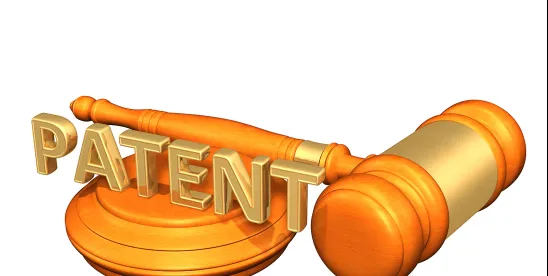Current written description jurisprudence can make it difficult to obtain broad antibody patents, leading practitioners to explore alternative claiming strategies in an effort to bypass the limited scope afforded under the structure-function paradigm. Xencor pursued a so-called Jepson claim and argued that the portion of the claim reciting an antibody did not have to satisfy the written description requirement of 35 U.S.C. § 112. However, both the USPTO and the Federal Circuit blocked this attempt to make an end-run around the statute. Xencor also pursued a means-plus-function claim, but because it was invalidated on a different basis it remains to be seen how the court will treat means-plus-function antibody clauses.
What Is A Jepson Claim?
Jepson claims have a specific format provided for and defined in 37 CFR § 1.75(e):
Where the nature of the case admits, as in the case of an improvement, any independent claim should contain in the following order:
(1) A preamble comprising a general description of all the elements or steps of the claimed combination which are conventional or known,
(2) A phrase such as “wherein the improvement comprises,” and
(3) Those elements, steps and/or relationships which constitute that portion of the claimed combination which the applicant considers as the new or improved portion.
As this language highlights, a Jepson claim has a specific format: (i) a preamble that identifies conventional/known features of the claimed subject matter; (ii) a specific transitional phrase, and (iii) a recitation of the “new or improved” aspects of the claimed subject matter.
Xencor’s Jepson Claim
As summarized in the Federal Circuit decision, the Xencor patent application at issue related to modified antibodies with certain amino acid substitutions that prolong half-life in vivo and “reduce[] the need for more frequent treatment.” The Jepson claim at issue recited specific mutations made in an “anti-C5 antibody”:
8. In a method of treating a patient by administering an anti-C5 antibody with an Fc domain, the improvement comprising
said Fc domain comprising amino acid substitutions M428L/N434S as compared to a human Fc polypeptide,
wherein numbering is according to the EU index of Kabat,
wherein said anti-C5 antibody with said amino acid substitutions has increased in vivo half-life as compared to said antibody without said substitutions.
Does a Jepson Preamble Require Written Description Support?
The written description question surrounding Xencor’s Jepson claim focused on whether the written description requirement even applied to the “anti-C5 antibody” recited in the preamble. In particular, Xencor argued that “because the ‘invention’ in a Jepson claim is the improvement, it needed only to have written description for that improvement—here, everything other than the preamble.” Not surprisingly, the USPTO’s position was that “Jepson claim preambles are part of the invention and, therefore, require written description.”
The Federal Circuit opinion was written by District Judge Schroeder of the United States District Court for the Eastern District of Texas (sitting by designation) and joined by Judges Hughes and Stark. The Federal Circuit agreed with the USPTO that “a Jepson claim preamble requires written description.” After citing case law supporting this interpretation, the opinion explained:
The invention [of a Jepson claim] is not only the claimed improvement, but the claimed improvement as applied to the prior art, so the inventor must provide written description sufficient to show possession of the claimed improvement to what was known in the prior art.
*****
While a Jepson claim is directed to the improvement it makes to the prior art, the claim is a singular thing and cannot be separated; its totality is what must have written description support, which necessarily includes support sufficient to lead an ordinary artisan to understand that the inventor did, indeed, possess what the patent contends was in the prior art.
*****
A patentee cannot be permitted to use a Jepson claim to avoid the requirement that she be in possession of the claimed invention simply by asserting something is well-known in the art.
The Federal Circuit also agreed with the USPTO determination that the written description requirement was not satisfied:
The specification only disclosed one anti-C5 antibody, 5G1.1, which the [USPTO] found was insufficient given the “various specificities and epitopes” of the genus. [Additionally,] Xencor had not demonstrated that anti-C5 antibodies were well-known and did not require further support in the specification.
According to the opinion, Xencor’s appeal did not challenge these determinations on the merits, choosing instead to rest on its legal arguments.
What About Means-Plus-Function Claiming?
Another alternative claim format is means-plus-function claiming, which is provided for and defined in 35 USC § 112(f).
An element in a claim for a combination may be expressed as a means or step for performing a specified function without the recital of structure, material, or acts in support thereof, and such claim shall be construed to cover the corresponding structure, material, or acts described in the specification and equivalents thereof.
Xencor’s application included a claim that recited the antibody using means-plus-function language:
9. A method of treating a patient by administering an anti-C5 antibody comprising:
a) means for binding human C5 protein; and
b) an Fc domain comprising amino acid substitutions M428L/N434S as compared to a human Fc polypeptide,
wherein numbering is according to the EU index of Kabat,
wherein said anti-C5 antibody with said amino acid substitutions has increased in vivo half-life as compared to said antibody without said substitutions.
As explained in MPEP § 2181, during examination a means-plus-function clause is interpreted as reciting “the structure, material or act described in the specification as performing the entire claimed function and equivalents to the disclosed structure, material or act.” The structure described in Xencor’s specification as performing the claimed function of “binding human C5 protein” was the 5G1.1 monoclonal antibody.
The USPTO had invalidated this claim for lack of written description for the “method of treating” clause of the preamble, but it is not clear the means-plus-function clause would have fared any better. MPEP § 2181 cites the en banc Federal Circuit decision in Ariad Pharmaceuticals Inc. v. Eli & Lilly Co. for the proposition that when claims “use functional language to define the boundaries of a claimed genus” the specification must show that “the applicant [inventor] has invented species sufficient to support a claim to the functionally-defined genus.” While Xencor may have wanted the Federal Circuit to specifically decide whether and how Ariad applies to means-plus-function clauses, the court instead affirmed the USPTO’s finding that the specification did not demonstrate possession of “a method of treating a patient with 5G1.1 and its equivalents.”
Is This “Too Clever” Claim Drafting?
Judges have criticized “clever claim drafting” to avoid statutory requirements (or current interpretations thereof), but when patentability can turn on precise word choices, practitioners should not be blamed for trying different approaches. As the Honorable Judge Rich stated, “the name of the game is the claims.” When the rules of the game make it difficult to secure broad protection for antibody-related inventions, clever claim drafting may be a winning strategy.




 />i
/>i
